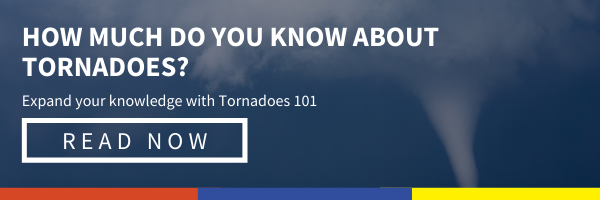Watch the 2020 Nashville Tornado Unfold
- Mar 03, 2020
A deadly tornado ripped through Nashville, Tennessee during the early morning hours on March 3, 2020. The Nashville tornado left behind an apocalyptic scene throughout Wilson, Putnam, Davidson, and Benton counties, with homes and buildings completely flattened.
Smashed cars, dozens of buildings damaged and several people missing or injured — Tennessee tornadoes cause severe damage in Nashville https://t.co/yykKOHN5nY pic.twitter.com/B63kohBPi4
— CBS News (@CBSNews) March 3, 2020
Officials have called a State of Emergency. Emergency crews worked tirelessly throughout the morning, digging through rubble hoping to find survivors. Preliminary damage surveys show at least EF-3 damage in Mount Juliet and Donelson.
Survey results so far: Mount Juliet (Wilson), at least EF-3 damage (155-160 mph). Donelson (Davidson), at least EF-3 damage (160-165 mph). This is just damage observed in these neighborhoods and it might possibly be the same tornado.
— NWS Nashville (@NWSNashville) March 3, 2020
There are at least 22 confirmed tornado fatalities and 200 injuries. The number has been rising all day as rescue and cleanup efforts continue.
Watch the Nashville Tornado Unfold
The following video shows a firsthand account of the tornado. You can scroll down to our weather data video to get a good idea of the path of the storm.
If a tornado is forecast or observed in your area, get away from windows and to a safer spot like a basement or interior room.
Wow, video shows the moment a tornado hits WTVF in Nashville. pic.twitter.com/72uOXDAONo
— Nicholas Vlasin (@NickV_KCTV5) March 3, 2020
We used our proprietary total lightning network and weather network data along with local storm reports and warnings from the National Weather Service to pull together a video timeline of the event. You can watch the tornado unfold through lightning strikes, storm reports, and Dangerous Thunderstorm Alerts (DTAs) below.
While storm warnings and alerts provide more lead time for people to seek shelter, this timing of this event was dangerous as most people were asleep.
What You’re Watching
Our Earth Networks Total Lightning Network detected 278 pulses, 31 storm cell tracks, and two Dangerous Thunderstorm (DTA) alerts between the hours of 05:00 UTC and 08:00 UTC.
A high frequency of in-cloud lightning strikes generated the first DTA at 05:55 UTC, approximately 16 minutes before the National Weather Service (NWS) Severe Thunderstorm Warning for East Nashville.
This storm had an incredible flash rate of 32 flashes per minute with an in-cloud flash rate of 30.67 flashes per minute. High lightning flash rates – especially in-cloud flashes – indicate a higher potential for severe weather like tornadoes.
Our Earth Networks Total Lightning Network also issued another DTA at 06:10 UTC one minute before the NWS Thunderstorm Warning.
The red triangle in the video above shows the NWS local storm report of a tornado in the area.
Tracking and Confirming the Nashville Tornado
The tornado, or possibly tornadoes, resulted from strong storm system that moved through Tennessee. NOAA Radar Composite Imagery (pictured below) shows a powerful supercell thunderstorm of East Nashville early in the morning.

This supercell was observed around the same time of the deadly tornado touchdown in East Nashville around 06:40 UTC.
Our network accurately tracked the strong storm cells as they moved westward across the Nashville area. We generated 31 cell tracks (red, orange, and green circles) and two DTAs (purple polygons) as the storms moved through the region.

Also pictured above are the red and orange NWS alerts and Storm Reports. The Nation Oceanic and Atmospheric Administration’s (NOAA) Storm Prediction Center (SPC) included 8 tornado reports, 14 wind reports, and 40 hail reports.

Increase Your Tornado Knowledge and Safety
Everyone at Earth Networks is keeping the people of Nashville and others impacted by this dangerous weather event in our thoughts.
One good thing that can come out of weather-related tragedies like this is awareness and safety information.
Please follow the link below to learn more about tornadoes and tornado safety.







